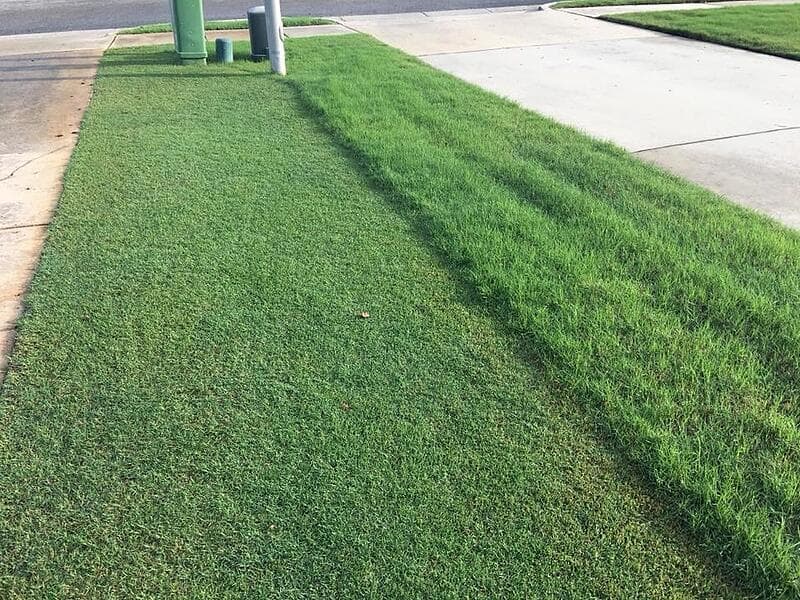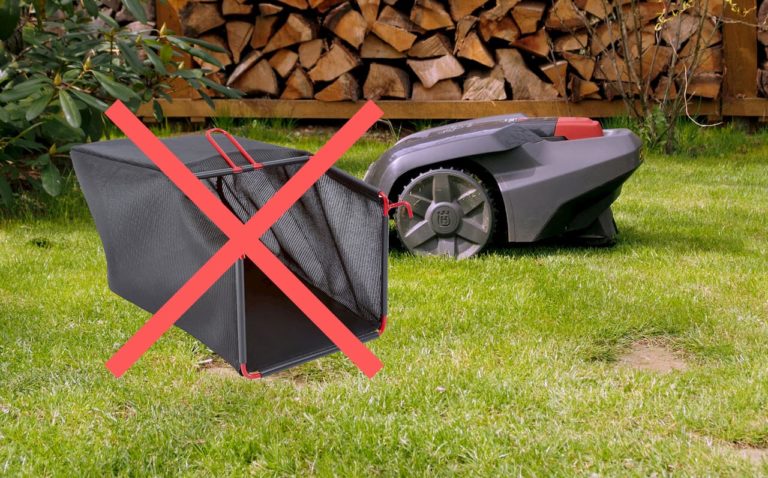You have probably already seen robotic lawn mowers being shown off at tech exhibitions or advertised online. Or perhaps you’ve even seen one in action in someone’s yard.
Indeed, just searching the words “Robotic Lawn Mower” on Youtube will serve up countless reviews, promotional montages and footage of these futuristic devices in action.
Robotic lawn mowers are fully functional lawn mowers and have many advantages over traditional gas-powered or tethered lawn mowers. Robotic lawn mowers can be used to meet all the mowing needs that traditional lawn mowers are designed for.
I am often asked whether robotic lawn mowers really work. Having reviewed and used as many models as I have since they originally made their debut in 1995, with the Solar Robotic Lawn Mower, I am the first to admit that first-generation robotic lawn mowers were often unable to carry out even basic functions and were even completely useless in some cases.
However, we have come a long way since then and robotic lawn mowers are no longer a joke or just a funny gimmick (like robotic vacuum cleaners were when they first came out). I have written this article as a response to both people who have not owned a robotic lawnmower before (and are thus simply unaware of how well they work) as well as individuals who have perhaps used robotic lawn mowers in the past, but are still unaware of just how much they have progressed over the last 15 years.
In the following sections, I have listed a number of factors and areas in which robotic lawn mowers can provably outperform traditional manually-operated lawn mowers, in addition to saving you huge amounts of time and being less environmentally harmful and safer for people and pets. Read on to find out more.
Contents
So Do Robotic Lawn Mowers Really Work?
Robotic lawn mowers are definitely capable of carrying out all your lawn mowing tasks, and can furthermore do so unattended. It is however important to note that robotic lawn mowers were designed for just that purpose — to mow lawns.
Basically, robotic lawn mowers are generally very good at what they do but there are certain things that they are just not designed to do — such as picking up leaves and trimming your hedges. Having said that though, robotic lawn mowers are generally a good investment, as long as you buy the right model for your own use case scenario.
(to find out more about different robotic lawn mower models and what they are designed and suited to, you can also read my article on “Best Robotic Lawn Mowers in 2021”).
First of all, here are some of the more obvious reasons that prove, without any doubt, that robotic lawn mowers do work:
Firstly, the fact that the market size of robotic lawn mowers is growing rapidly clearly indicates that they must be doing something right. It is projected that by 2025, robotic lawn mowers will have increased in market size by 13.10% and will have reached a market size of $1,261 mil (Source: marketsandmarkets.com).
In the same way that automatic vacuum cleaners were initially considered a gimmick when they first came out, robotic lawn mowers are well on their way to becoming standard tools in any lawn owner’s arsenal of maintenance equipment.
As mentioned though, there are certain things that robotic lawn mowers are NOT capable of doing:
- Setting themselves up (configuring their schedules, mowing zones, etc.)
- Setting up their mowing perimeters, which require a human to do — although this is only required once before deploying your mower
- Repairing themselves
- Doing other types of gardening work, such as gathering leaves and trimming hedges (although they do naturally fertilize your lawn thanks to the mulching function that occurs due to repeated cutting of previously cut lawn clippings — more about that later)
Secondly, the fact that they are still around after 15 years means that they must be improving. And as you will see in the section How do robotic lawn mowers perform compared to regular lawn mowers? at the end of this article, you may very well be surprised by just how much more efficient they are at mowing your lawn, whilst at the same time producing better results than traditional lawn mowers and saving you huge amounts of time, which is why most people become interested in robotic lawn mowers in the first place.
Here is a user review by a first-time owner of a device in the Worx Landroid series.
Some Robotic Lawn Mower Facts That May Surprise You
Maybe the first time you heard about them, you thought they were just toys aimed at tech nerds with too much time and money. Maybe, some months or years later, when you actually saw one for sale, you thought that the companies manufacturing them were a little too optimistic for their own good. But now that robotic lawn mowers are gaining traction around the world, and have become a rapidly growing product sector with a projected annual growth of 13.10% — maybe it is time that you too reconsidered what these robotic workers could do for you.
Brands like Husqvarna, with their high-tech Automower line of robotic lawn mowers, are considered industry leaders in what is clearly becoming a market that is here to stay. And extremely popular models, such as those in the Worx Landroid series, make it possible for lawn owners, with yards or gardens of any size, to take advantage of the technology that robotic lawn mowers offer due to the fact that there are now models available that cater to all yard sizes and garden types.
Now that I have shared some insights into just how useful robotic lawn mowers really are, let us take a closer look at some of the advantages of owning a robotic lawn mower vs. keeping your traditional lawn mower.
The Advantages of Robotic Lawn Mowers vs. Traditional Lawn Mowers
Robotic Lawn Mowers Are REALLY Quiet
Almost all robotic lawn mowers work extremely quietly, reaching not more than 65 decibels, which in many cases can already be quiet enough to let them mow during the night.
There are some brands whose models are even quieter, such as the HUSQVARNA Automower line, or other affiliated brands like MCCULLOCH, FLYMO or GARDENA, which all belong to the Husqvarna Group. Their models usually reach between 55 and 60 decibels. In the very near future there will even be robots that only emit as much as 50 decibels, like Toadi, for instance. For comparison: Your refrigerator will probably reach about 55 decibels.
Robotic Lawn Mowers Do Not Emit Any Harmful Gases
Unlike their gas-powered manually-operated counterparts, robotic lawn mowers do not emit any harmful gases. Whether you are a nature lover, a tech lover, or both (like myself), it is unlikely that you enjoy the harmful gases that are emitted by your old gas-powered lawn mower.
You’ll Save Several Hours a Month (at Least)
All things considered, the main reason why most people are interested in robotic lawn mowers is that they want to spend their free time doing something other than mowing the lawn. Whether you are one of those people and just want your weekends back, or are like me and actually enjoy doing gardening work, the fact is that mowing the lawn is probably the most time consuming (and repetitive) task that garden maintenance requires.
Robotic Lawn Mowers Can Be Configured From Anywhere
Indeed, once their mowing perimeters and zones have been set up, robotic lawn mowers can be configured and managed from the comfort of your couch — or anywhere else in the world for that matter. Most devices come with dedicated apps for various operating systems, including Android and iOS, meaning that you can literally manage your robotic mower’s schedules and other behaviour remotely.
Some models, including all those made by Husqvarna, even feature Alexa compatibility, meaning that you can operate your robotic lawn mower by giving it voice commands via your smartphone. Here are the impressive range of commands that Husqvarna robotic mowers can already understand and respond to:
| TO DO THIS … | SAY … | ALTERNATIVES | ACTION |
| Start/Resume/Continue | “Alexa, ask Automower to start” | You can also use the words “resume” or “continue” | Automower resumes mowing according to schedule. If not in schedule, it will not mow until next scheduled start. |
| Pause | ‘Alexa, ask/tell Automower to stop” | You can also use “pause” | Automower will pause at its current location. |
| Park | “Alexa, ask tell Automower to park” | You can also use “return home,” “go back home” or “take a break.” | Automower parks until next scheduled run. |
| Park until further notice | “Alexa, ask/tell Automower to park until further notice” | – | Automower parks and waits for next command, ignoring schedules. |
| Status | “Alexa, ask Automower about status” | You can also use “what it is doing,” “to check status” or “What is Automower up to?” | Tells the actual status and what Automower is doing right now. (No battery information.) |
| Help | [In context] “I need some assistance” | You can also use “Help” or “What can I do” | – |
Your Lawn Will Be Healthier and Look Better
This is due to two reasons: Firstly, as opposed to tearing the tops off your lawn’s blades of grass, robotic lawn mowers use razor-sharp cutting blades to literally slice them, meaning that your lawn will be less prone to fraying and drying out and will consequently look greener and be healthier in general.
Secondly, since robotic lawn mowers generally weigh a lot less than traditional ones, they do not squish your lawn down into the turf to the extent that the wheels of your big old gas guzzler would, which means that they are less likely to wear down your turf in spotty areas.
Finally, instead of picking up your lawn’s clippings once they have been cut, robotic lawn mowers cut them again and again each time they mow your lawn. This results in a finer and finer mulch over time, which means that clippings from previous cuts become fertilizer for your lawn, resulting once again in a healthier and greener looking lawn.
Robotic Lawn Mowers Are Much Safer for Humans and Pets
The blades on robotic lawn mowers are located entirely under the device and almost all models automatically shut down as soon as they are tilted or lifted, which is an important consideration when you bear in mind that the number of mower-related injuries in the United States is as high as 80,000 each year!
Robotic Lawn Mowers Work Out to Be Cheaper in the Long Run
Although robotic lawn mowers are generally priced starting from $900 for entry-level models, such as the Redback MowRo RM24 or the Worx WR140 Landroid, to over $5000 for high-end models, such as the premium Husqvarna Automower 435X, they will very likely end up costing you less in the long run. This is mainly due to 3 reasons:
- Lower maintenance costs than traditional lawn mowers
- You don’t have to pay anyone to cut your lawn
- You save a LOT of time, which may result in your being more productive in other areas, even if you use the extra time you will have to rest
Robotic Lawn Mowers Can Actually Be Quite a Lot of Fun
Remember the last time you were sitting around the table discussing how cool and fun your old gas-powered lawn mower was? Remember how excited your neighbors kids were when they saw you pushing your manual mower up and down your lawn for the 40th time in the same year? …Me neither.
However, once people start seeing your robotic lawn mower, quietly and meticulously working its way back and forth on your lawn, fully autonomously and unattended, the chances are that they will become quite curious, and it will start to turn a lot of heads and even become a topic of conversation the next time you are having friends over for a barbecue on your freshly manicured lawn — courtesy of your robotic lawn mower of course. In fact, come to think of it, it may even be hard at work, tirelessly mowing your lawn, as you go about your business of relaxing — which is what lawns are really there for, right?
Robotic Lawn Mowers Often Have Anti-theft Features
Many robotic lawn mowers, including the entire Husqvarna Automower line of mowers, come with built-in or optional anti-theft features, such as GPS tracking. This means that even if someone tries to pick up your robotic lawn mower and run (most devices also sound an alarm if they are lifted or tilted without first entering their security PIN codes), they would have a hard time getting very far since your robotic lawn mower would send you an SMS or app notification telling you that it has been tampered with or has left its pre-configured mowing zone.
Under the Hood — Some Basics on How Robotic Mowers Work
Most robotic lawn mowers are powered by lithium-ion rechargeable batteries, but there are also models that use lead acid or nickel cadmium batteries. The devices ship with charging bases that act as docking stations and can be plugged in to outdoor outlets to recharge your mower. When a robotic lawn mower detects that its battery is running low, or its work has been completed, it will return to its charging base on its own. Robotic lawn mowers require a very small amount of power compared to their gas-powered counterparts.
Robotic lawn mowers are designed for different use cases and some can cut up to 5 acres on a single full charge, but most consumer models are generally designed to be able to cut up to 1.25 acres, which is more than enough for most users. Some advanced devices, such as the Husqvarna Automower 435X, implement AI learning software that enables them to learn to be more effective each time they cut your lawn by avoiding areas in which they have previously detected obstacles and also means they can avoid cutting the same areas twice whenever possible. Worx is another robotic lawn mower manufacturer that offers models, such as the WR140 Landroid and the WR150 Landroid, which implement their own patented AIA technology to achieve similar results. Here is a video showing how the Worx AIA technology works:
The reason that robotic lawn mowers “know” where to mow, and don’t disappear down your driveway, is thanks to the special perimeter wire (also known as a “guide wire”) which ships with most devices and has to first be laid out in the area that is to be mowed. Usually pegs are used to ensure that the perimeter wire remains in place over time. The devices use onboard sensors to relay information to their software so as to be able to autonomously avoid areas that have thus been marked off by the guide wire.
How do robotic lawn mowers perform compared to regular lawn mowers?
Almost every user review I have come across so far is positive in favor of robotic lawn mowers vs. traditional ones. Most users are only too pleased at the time that they save thanks to their robotic lawn mowers, but it actually turns out that one unexpected result among many new users is the fun they end up having managing and operating their robotic lawn mowers remotely.
And if you are primarily concerned about the results for your lawn, here are some side-by-side comparison images that should convince you once and for all that robotic lawn mowers clearly win in this category too.

Guess which side is the work of the robotic lawn mower in this image? The left side is dense and even whereas the right side is already quite tall since its owner is not able to mow as regularly as his robotic counterpart. Robotic lawn mowers can mow their assigned zones on a regular schedule, like clockwork, regardless of weather conditions or even the time of day (since many models are so quiet that they can mow at night).
The length of the lawn on the right increases its chances of being torn out on subsequent cuts, as well as its susceptibility to diseases, whereas the lawn on the left side remains healthy, even and aesthetically pleasing consistently.

Even I was surprised at this one. After just one week of side-by-side mowing, the left side, which was mowed by a traditional lawn mower, clearly shows yellowing grass with lines indicating damage. Conversely, on the right side you can see the robotic lawn mower still tending to its green and perfectly manicured lawn.

Here is another clear example of how much better the results are when using a robotic lawn mower (right) vs. a traditional lawn mower (strip on the left). The right side is even and healthy whereas the traditional lawn mower has left the strip on the left with clear striping lines indicating damage.
Finally, if you are still not convinced that robotic lawn mowers definitely do work, here is a video by a tech reviewer that got to use one of the Worx Landroid models for the first time in his own garden.
Hope you enjoyed this one. Let me know if you would like me to write on any specific topics by leaving a comment. Looking forward to the next one!





